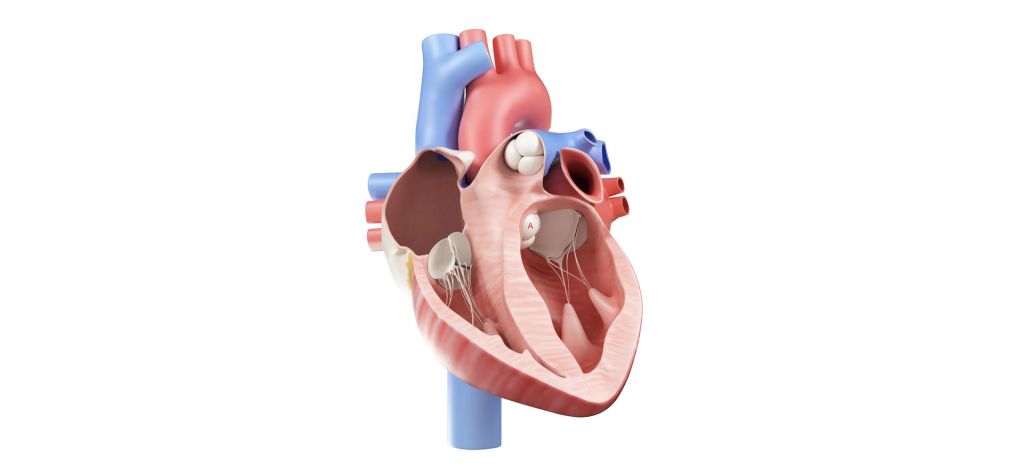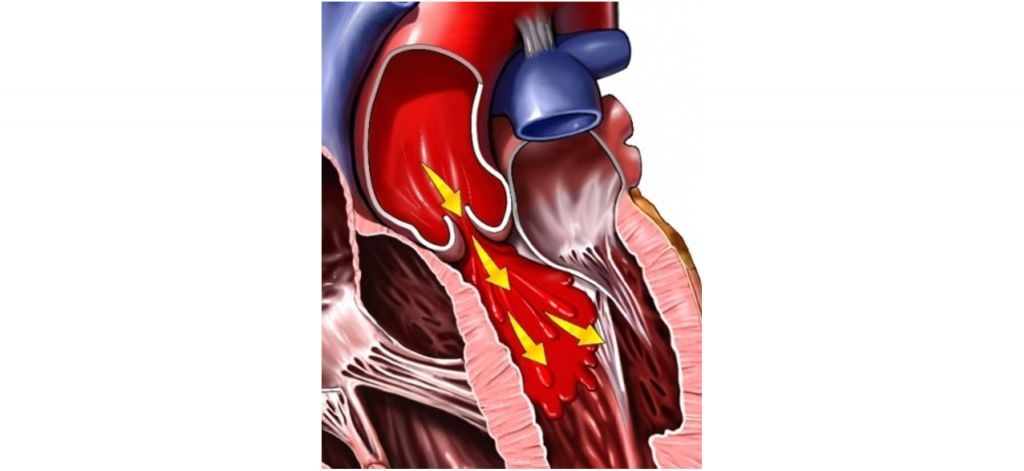DIAGNOSES-OPERATIONS
AORTIC VALVE REGURGITATION
The revolution in heart valve operations has come from the advent of the Heart Team, a group of specialized physicians dealing with all aspects of the heart – cardiac surgeons, interventional cardiologists, echocardiographers, cardiac anesthesiologists, vascular surgeons and cardiac radiologists. This team analyzes all of the patients data and recommends a solution that is customized for the specific patient. The heart team at HYGEIA Hospital is one of the few teams worldwide that performs operations that are cutting-edge, oftentimes with technology that is not available to all physicians (in the setting of a clinical trial). This gives us the opportunity to provide solutions for patients who have been told that they are inoperable.
Of paramount importance is the unique Hybrid Operating Room at HYGEIA Hospital which is the first in Greece. The Hybrid Operating Room is an operating room of the highest technological specifications which is modified to be able to carry out both classic “open” operations as well as endovascular and transcatheter operations which are performed with a simple needlestick and without any incisions.
Dr. Pattakos is the co-organizer of the well-known conference “Transcatheter Heart Valves Greece” which is attended by international experts in cardiology and cardiac surgery to discuss the latest developments regarding heart valves. For further information please visit www.thvgreece.com
VALVE REPAIR OR VALVE REPLACEMENT?
Heart valve operations are divided into those which repair the valve and those which replace the valve if it cannot be repaired. The anatomic characteristics of each valve help the surgeon decide which of the two choices is best for each patient.
SELECTION OF MECHANICAL OR BIOLOGICAL VALVE
For patients who require a valve replacement there is a choice to be made about whether to receive a mechanical (also known as metallic) valve or a biological valve.
A mechanical valve can function for multiple decades but the drawback is that patients require blood thinners. The patient who takes these blood thinners requires frequent laboratory evaluation of their levels. They must also eat stable quantities of foods that contain Vitamin K as this vitamin influences the clotting process. There is also an estimated 1-2% risk of clotting of the valve or bleeding anywhere in the body.
Biological valves do not require blood thinners but they have an approximately ten year lifespan (longer for older patients and shorter for younger patients). When the valve starts to dysfunction this usually happens gradually and patients perceive symptoms and must usually receive a second operation. This second operation can be performed either with open surgery or, in some cases, with a catheter using a small puncture in the groin.
WHAT IS IT?
The aortic valve sits between the heart and the aorta (the major blood vessel leaving the heart). When it functions properly it allows blood to exit the heart but does not allow it to re-enter thereby providing for forward flow. When there is aortic valve regurgitation or insufficiency part of the blood that is supposed to move forward towards the body instead moves backwards towards the heart.
WHAT ARE THE CAUSES?
Aortic valve regurgitation frequently coexists with aneurysms (enlargement) of the aorta which thereby pulls the leaflets of the valve not allowing it to close properly. Other causes include bicuspid aortic valve (an anatomic variation present since birth), rheumatic fever usually caused by a streptococcal infection such as strep throat, or calcium build-up on the valve which does not allow the valve to close properly.
SYMPTOMS
Aortic valve regurgitation causes an overload of the amount of blood in the heart since the blood leaks back into the heart instead of moving forward towards the body. This overload may lead to symptoms of difficulty breathing, easy fatigue, a sensation of heart fluttering, dizziness and swollen legs. When there are symptoms it usually means that the valve regurgitation has progressed to a severe level.
OPERATION
The anatomy of the valve and the cause of the regurgitation will determine if the valve can be repaired or whether replacement will be necessary. Repair may be achieved by modifying the valve leaflets as needed or simply by correcting the coexistent aneurysm in a certain way if such an aneurysm is present. In cases where the valve needs to be replaced the choice is made between a biological valve and a mechanical valve. This can usually be achieved with less invasive methods such as mini-sternotomy or right mini-thoracotomy. In certain cases the valve may be able to be replaced using a transcatheter approach but this is not the standard treatment as most current transcatheter valves have been designed for patients with aortic stenosis and not regurgitation.
Of paramount importance is the unique Hybrid Operating Room at HYGEIA Hospital which is the first in Greece. The Hybrid Operating Room is an operating room of the highest technological specifications which is modified to be able to carry out both classic “open” operations as well as endovascular and transcatheter operations which are performed with a simple needlestick and without any incisions.
Dr. Pattakos is the co-organizer of the well-known conference “Transcatheter Heart Valves Greece” which is attended by international experts in cardiology and cardiac surgery to discuss the latest developments regarding heart valves. For further information please visit www.thvgreece.com
VALVE REPAIR OR VALVE REPLACEMENT?
Heart valve operations are divided into those which repair the valve and those which replace the valve if it cannot be repaired. The anatomic characteristics of each valve help the surgeon decide which of the two choices is best for each patient.
SELECTION OF MECHANICAL OR BIOLOGICAL VALVE
For patients who require a valve replacement there is a choice to be made about whether to receive a mechanical (also known as metallic) valve or a biological valve.
A mechanical valve can function for multiple decades but the drawback is that patients require blood thinners. The patient who takes these blood thinners requires frequent laboratory evaluation of their levels. They must also eat stable quantities of foods that contain Vitamin K as this vitamin influences the clotting process. There is also an estimated 1-2% risk of clotting of the valve or bleeding anywhere in the body.
Biological valves do not require blood thinners but they have an approximately ten year lifespan (longer for older patients and shorter for younger patients). When the valve starts to dysfunction this usually happens gradually and patients perceive symptoms and must usually receive a second operation. This second operation can be performed either with open surgery or, in some cases, with a catheter using a small puncture in the groin.
WHAT IS IT?
The aortic valve sits between the heart and the aorta (the major blood vessel leaving the heart). When it functions properly it allows blood to exit the heart but does not allow it to re-enter thereby providing for forward flow. When there is aortic valve regurgitation or insufficiency part of the blood that is supposed to move forward towards the body instead moves backwards towards the heart.
WHAT ARE THE CAUSES?
Aortic valve regurgitation frequently coexists with aneurysms (enlargement) of the aorta which thereby pulls the leaflets of the valve not allowing it to close properly. Other causes include bicuspid aortic valve (an anatomic variation present since birth), rheumatic fever usually caused by a streptococcal infection such as strep throat, or calcium build-up on the valve which does not allow the valve to close properly.
SYMPTOMS
Aortic valve regurgitation causes an overload of the amount of blood in the heart since the blood leaks back into the heart instead of moving forward towards the body. This overload may lead to symptoms of difficulty breathing, easy fatigue, a sensation of heart fluttering, dizziness and swollen legs. When there are symptoms it usually means that the valve regurgitation has progressed to a severe level.
OPERATION
The anatomy of the valve and the cause of the regurgitation will determine if the valve can be repaired or whether replacement will be necessary. Repair may be achieved by modifying the valve leaflets as needed or simply by correcting the coexistent aneurysm in a certain way if such an aneurysm is present. In cases where the valve needs to be replaced the choice is made between a biological valve and a mechanical valve. This can usually be achieved with less invasive methods such as mini-sternotomy or right mini-thoracotomy. In certain cases the valve may be able to be replaced using a transcatheter approach but this is not the standard treatment as most current transcatheter valves have been designed for patients with aortic stenosis and not regurgitation.


